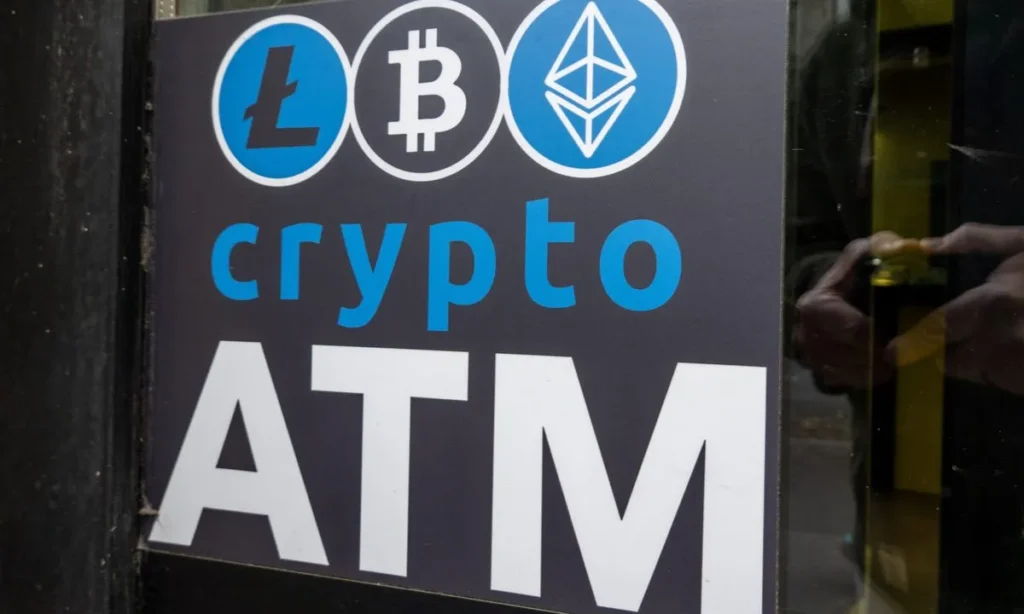Super Bowl advertisements, sponsorships of arenas, and celebrity endorsements all existed. TV commercials were broadcast during the evening news. Money poured into TikTok, Facebook, and Twitter.
Cryptocurrency businesses were making purchases everywhere.
According to MediaRadar, through October 2022, crypto-related brands spent $223 million on advertising in the United States, up from $89 million for the entire previous year. Few were as proactive as Crypto.com, which declared in late 2021 that it would invest $100 million in an advertisement campaign starring Matt Damon and taking place in 20 different nations. The business is a recognized sponsor of the Qatar-hosted 2022 World Cup.
The crypto industry has the power to revoke everything it grants.
The shocking collapse of cryptocurrency exchange FTX and its creator Sam Bankman-Fried’s broader company earlier this month bodes more difficulty for ad-supported media companies that had grown to see crypto as a new growth engine with money to spend. And FTX is far from the only issue; the virus has been spreading for months.
Since June, when CEO Brian Armstrong acknowledged that the company had grown too quickly and emphasised the “need to minimise expenses,” Coinbase has lost nearly 80% of its value and reduced its workforce by 18%. According to reports, Crypto.com has reduced its personnel by 40%, eToro has reduced staff by 6% and cancelled a planned merger with a special purpose acquisition firm in July, and BlockFi has just filed for bankruptcy.
According to Grant Harbin, CEO of the performance marketing company Headlight, which has worked with businesses in the sector, Crypto winter is a crypto advertising winter. Scaling advertising budgets is probably not something that is being thought about right now.
According to MediaRadar, the top cryptocurrency advertisers spent barely $35 million on advertisements in the third quarter of this year, an 80% decrease from the first quarter, which benefited greatly from the Super Bowl, the nation’s greatest sporting event.
The decline in expenditure is notable as ad-based businesses face wider issues from skyrocketing inflation and worries of a recession, which are projected to worsen given the industry’s escalating upheaval. However, while being a development area that showed promise, cryptocurrency currently accounts for a very small share of the global ad market.
According to Insider Intelligence, businesses will spend close to $89 billion on TV advertisements this year spanning linear television and linked devices, and close to $250 billion on digital advertisements.
This year, SensorTower predicts that Facebook (including Instagram), Snap, Twitter, and TikTok will together bring in $57.1 million in advertising revenue from cryptocurrency exchanges. Although almost all of the money spent last year went on Facebook and Instagram, that is roughly on par with 2021 projections.
Alphabet blamed a slowdown in revenue growth, in part, on decreased ad spending by cryptocurrency companies and other financial firms during its third-quarter earnings call last month. With the exception of one quarter during the Covid epidemic, Google’s sales growth was the weakest since 2013 throughout this time frame.
The financial whirlwind
According to SensorTower statistics, cryptocurrency ad expenditure on digital media saw a significant increase in the months of October and November of last year, when values were at their highest, and a sharp decline after the first quarter of this year. The cryptocurrency sell-off started in earnest in April, with ether and bitcoin each losing significantly more than half of their value during the ensuing three months.
The industry may never experience another spending boom like the one the Super Bowl brought about. The average cost of a 30-second advertisement for the NFL’s championship game in February was $6.5 million, and cryptocurrency was a major theme.
Coinbase, Crypto.com, eToro, and FTX collectively spent $54 million on Super Bowl advertisements. In a 60-second commercial, Coinbase offered prospective users $15 worth of free bitcoin in exchange for scanning a bouncing QR code. In an advertisement for FTX, Larry David exhorts viewers to invest in cryptocurrency and calls NFTs “the next big thing.” During the eToro commercial, a rendition of “Fly Me to the Moon” was heard.
The price of promotion extended beyond airtime.
Crypto.com spent $700 million in 2021 to have its name attached to the Los Angeles Lakers’ arena for the following 20 years. For the naming rights to the Miami Heat’s arena, FTX agreed to a 19-year, $135 million contract. The company also teamed with the Golden State Warriors of the NBA and had its emblem placed on Major League Baseball umpires’ uniforms.
Miami-Dade County is currently attempting to have the FTX name removed from the arena. Miami has emerged as a key crypto business hub, and FTX relocated its U.S. headquarters from Chicago to Miami in September. The corporation expanded its presence in the area by sponsoring “FTX Off the Grid,” a three-day crypto weekend on South Beach in May.
Venture entrepreneur Jordan Levy of Miami claimed that while other cryptocurrency businesses had run advertisements there, FTX was at a different level.
The managing partner of SBNY, formerly SoftBank New York, claimed that “none of them have as significant a footprint in Miami as Bankman-Fried and FTX.” They have attempted to use guerilla marketing techniques that elevate them to the top of the food chain in terms of public perception.
The money that FTX was spending now probably disappears. Approximately half of the company’s $13.3 million in online advertising expenditures this year, according to SensorTower, came in the first quarter.
Crypto.com’s internet advertising expenditures fell precipitously from around $16.2 million in the first quarter to $1.6 million in the third. Additionally, the Winklevoss twins’ exchange, Gemini, reduced spending from $8.5 million in the first quarter to $2,500 in the third.
The only significant exchange that is listed on a U.S. stock exchange, Coinbase, said this month that its sales and marketing costs decreased by 46% to $76 million in the third quarter from the same period last year. The business cited their choice to cut performance marketing, due to poorer efficiency in this spend related with softer crypto market circumstances as well as savings associated with their personnel reduction as the cause of the decline.
A request for comment from Coinbase was ignored.
A spokesman for Crypto.com confirmed through email that the $100 million campaign for the startup lasted from October 2021 to February 2022. The representative stated that since then, they have increased their advertising as part of their marketing plan, and they continue to focus on their worldwide brand and sports alliances. This includes World Cup sponsorship.
According to Brad Michelson, head of marketing for eToro in the United States, the Israeli investing platform would actively modify spend based on results” and continue to strengthen its reputation in the country.
They are reallocating their spending in accordance with the markets’ well-known pullback phase, Michelson said.
The cryptocurrency market has experienced downturns in the past, only to recover and draw even bigger sums of money and new players.
Even if the market begins to recover, according to Joseph Panzarella, head of digital media and marketing at Yeshiva University’s Katz School of Science and Health, the high-profile scandals of 2022 will drive businesses to adopt a more serious approach when promoting their offerings.









